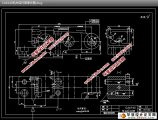车床后托架的制造工艺及夹具设计(开题报告,中期检查表,论文说明书17700字,工艺卡,CAD图7张)
摘 要: 在生产过程中,使生产对象(原材料,毛坯,零件或总成等)的质和量的状态发生直接变化的过程叫工艺过程,如毛坯制造,机械加工,热处理,装配等都称之为工艺过程。在制定工艺过程中,要确定各工序的安装工位和该工序需要的工步,加工该工序的机车及机床的进给量,
切削深度,主轴转速和切削速度,该工序的夹具,刀具及量具,还有走刀次数和走刀长度,最后计算该工序的基本时间,辅助时间和工作地服务时间。
关键词: 工序; 工艺;工步; 加工余量; 定位方案; 夹紧力;
Manufacturing Process and Fixture Design of After Bracket
Abstract: Enable producing the target in process of production (raw materials, the blank , state of quality and quantity on part become always ) take place direct course of change ask craft course, if the blank is made, machining, heat treatment , assemble etc. and call it the craft course. In the course of making the craft , is it confirm every erector location and worker step that process need this of process to want, the locomotive of processing , this process , and the entering the giving amount of the lathe, cut depth , the rotational speed of the main shaft and speed of cutting, the jig of this process, the cutter and measuring tool, a one hundred sheets of number of times still leaves and a one hundred sheets of length leaves, calculate basic time of this process , auxiliary time and service time of place of working finally.
Key words: the process; worker one; worker's step;the surplus of processing;orient the scheme ; clamp strength
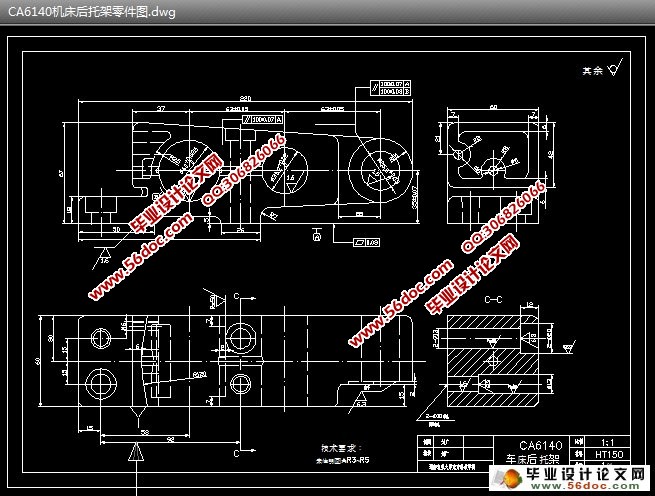
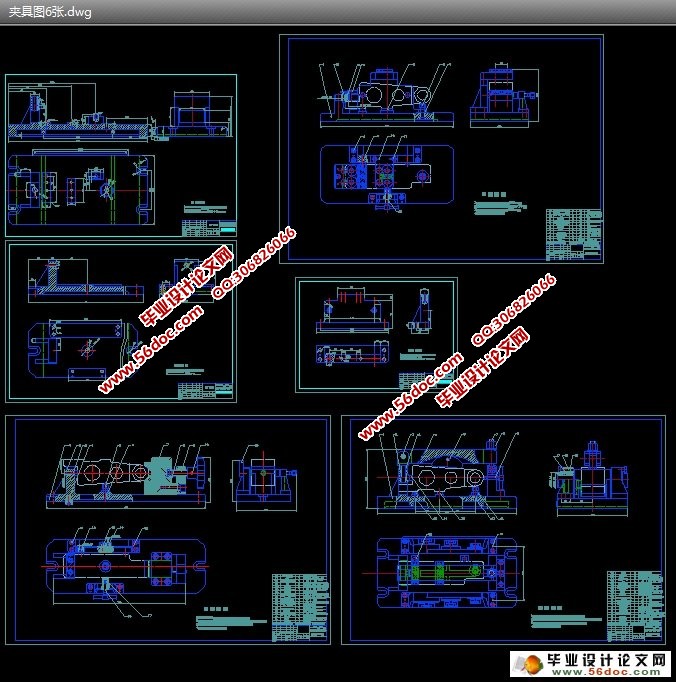
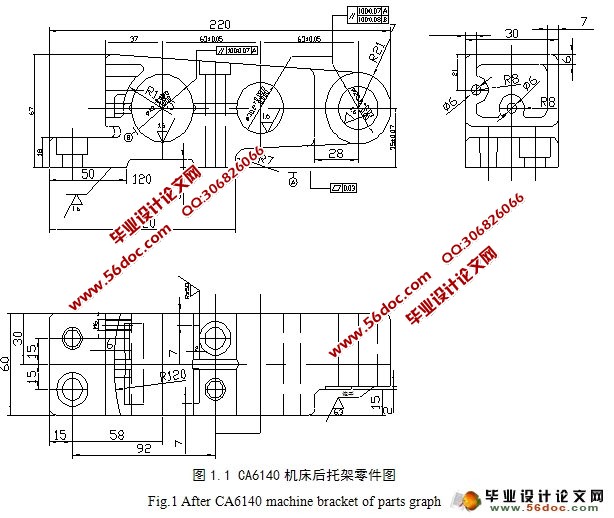
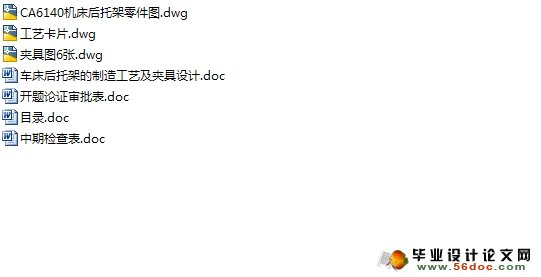
目 录
摘要……………………………………………………………………………1
关键词…………………………………………………………………………1
1前言……………………………………………………………………………1
2 CA6140机床后托架加工工艺………………………………………………………2
2.1 CA6140机床后托架的工艺分析………………………………………………2
2.2 CA6140机床后托架的工艺要求及工艺分析…………………………………3
2.2.1 CA6140机床后托架的技术要求…………………………………………3
2.3 加工工艺过程…………………………………………………………………4
2.4 确定各表面加工方案…………………………………………………………4
2.4.1 在选择各表面及孔的加工方法时,要综合考虑以下因素………………4
2.4.2 平面的加工…………………………………………………………………5
2.4.3 孔的加工方案……………………………………………………………5
2.5 确定定位基准…………………………………………………………………5
2.5.1 粗基准的选择……………………………………………………………5
2.5.2 精基准选择的原则………………………………………………………6
2.6 工艺路线的拟订………………………………………………………………7
2.6.1 工序的合理组合…………………………………………………………7
2.6.2 工序的集中与分散………………………………………………………7
2.6.3 加工阶段的划分…………………………………………………………8
2.6.4 加工工艺路线方案的比较………………………………………………9
2.7 CA6140机床后托架的偏差,加工余量,工序尺寸及毛坯尺寸的确定……12
2.7.1 毛坯的结构工艺要求…………………………………………………12
2.7.2 CA6140机床后托架的偏差计算………………………………………12
2.8 确定切削用量及基本工时(机动时间)……………………………………15
2.8.1 工序1:粗、精铣底面…………………………………………………15
2.8.2 工序2 粗、半精、精镗CA6140侧面三杠孔………………………16
2.8.3 工序3:钻顶面四孔……………………………………………………22
2.8.4 工序4:钻侧面两孔……………………………………………………26
2.9 时间定额计算及生产安排…………………………………………………28
2.9.1 粗、精铣底面……………………………………………………………29
2.9.2 镗侧面三杠孔……………………………………………………………29
2.9.3 钻顶面四孔……………………………………………………………30
3 专用夹具设计……………………………………………………………………31
3.1 铣平面夹具设计……………………………………………………………31
3.1.1 研究原始质料…………………………………………………………31
3.1.2 定位基准的选择………………………………………………………31
3.1.3 切削力及夹紧分析计算………………………………………………31
3.1.4 误差分析与计算………………………………………………………32
3.1.5 夹具设计及操作的简要说明…………………………………………33
3.2 镗孔夹具设计………………………………………………………………33
3.2.1 研究原始质料…………………………………………………………33
3.2.2 定位基准的选择………………………………………………………33
3.2.3 切削力及夹紧力的计算………………………………………………34
3.2.4 误差分析与计算………………………………………………………36
3.3 钻顶面四孔夹具设计………………………………………………………36
3.3.1 研究原始质料…………………………………………………………36
3.3.2 定位基准的选择………………………………………………………37
3.3.3 切削力及夹紧力的计算………………………………………………37
3.3.4 误差分析与计算………………………………………………………38
3.3.5 夹具设计及操作的简要说明…………………………………………38
4 结 论……………………………………………………………………………38
参考文献……………………………………………………………………………38
致谢…………………………………………………………………………………39
|
